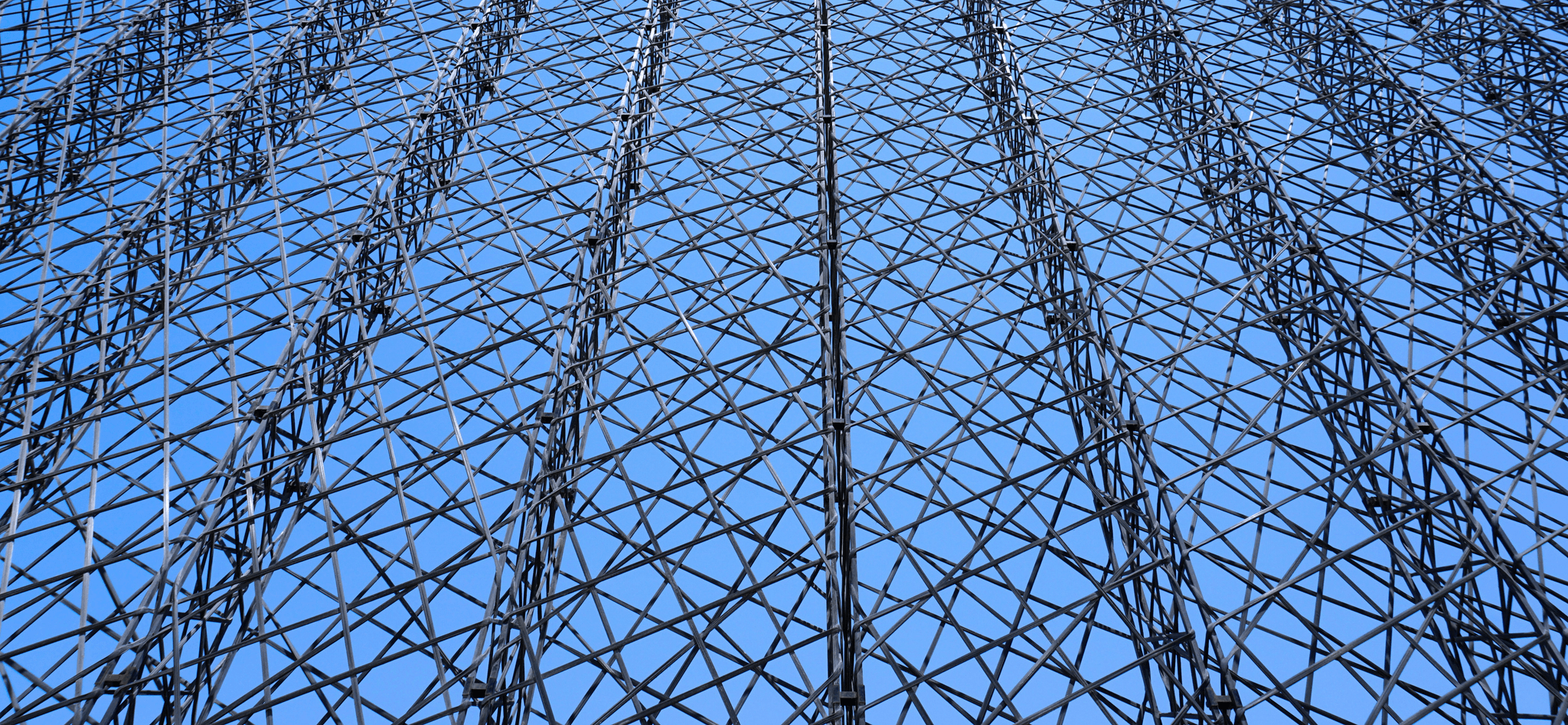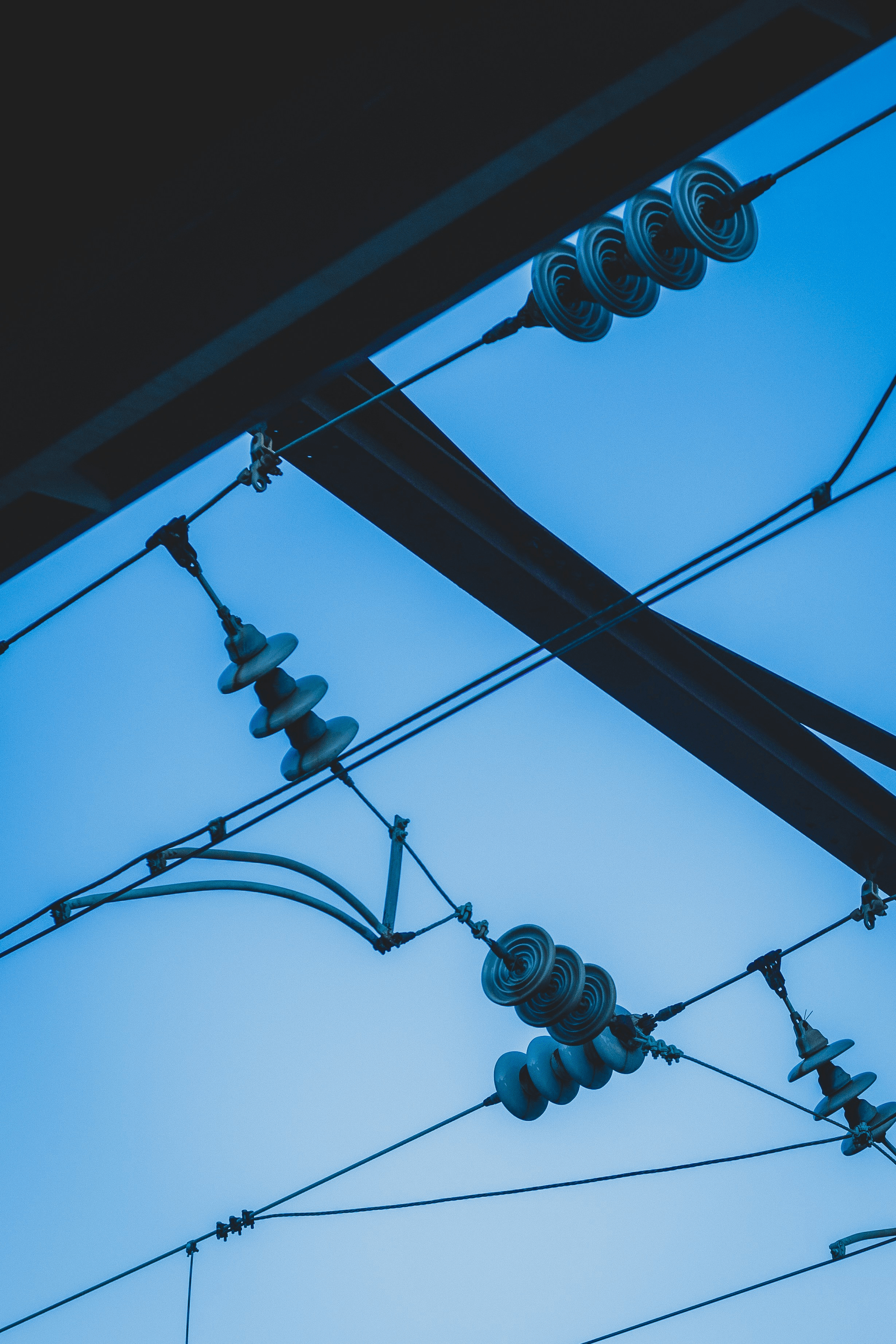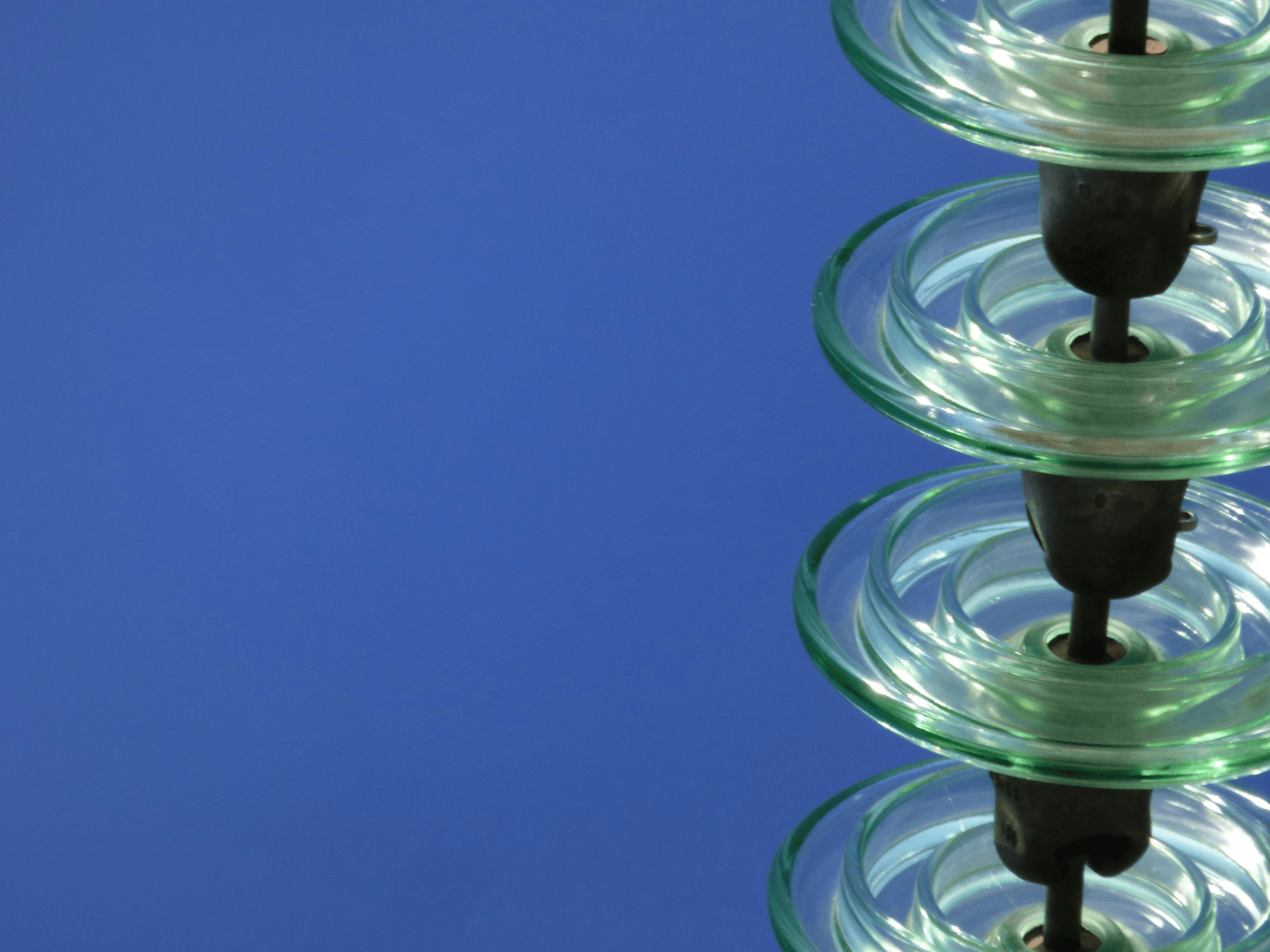Introduction
In the realm of electrical engineering, overhead line insulators play a critical role in ensuring the safety and efficiency of power transmission systems. These unsung heroes, often overlooked, are essential for maintaining the integrity of electrical lines while preventing short circuits and ensuring that energy flows smoothly from power plants to our homes. But what are line insulators, and why do they matter so much in our daily lives?
Understanding Overhead Line Insulators
Overhead line insulators are devices designed to support and separate electrical conductors without allowing current to pass through them. Essentially, they act as barriers between the live wires and their supporting structures, such as towers or poles. Understanding what a string insulator is—an assembly of multiple insulator units connected together—can further illuminate how these components work in unison to enhance safety in high-voltage environments.
Importance of Insulators in Power Transmission
The importance of insulators in power transmission cannot be overstated; they ensure that electricity travels safely over long distances without risk of leakage or failure. By insulating conductors from the ground or other structures, these devices prevent dangerous electrical discharges that could lead to catastrophic failures or hazards. As we delve deeper into what line insulators do, it becomes clear that their reliability directly impacts both operational efficiency and public safety.
Overview of Insulator Applications
Insulators find applications across various sectors—from utility companies managing high-voltage lines to telecommunications networks utilizing lower voltage systems. Their versatility extends beyond just supporting wires; they also play a pivotal role in protecting equipment from environmental factors such as moisture and pollution. As we explore what are the different types of insulators available today, it’s fascinating to see how each type is tailored for specific applications while addressing unique challenges faced by engineers.
What are Line Insulators?

Line insulators are essential components in the world of electrical power transmission, acting as barriers that prevent unwanted electrical currents from escaping into the environment. Essentially, a line insulator supports and separates conductors from each other and from supporting structures like towers or poles. By doing so, they ensure that electricity flows efficiently along its intended path while minimizing risks of short circuits and outages.
Definition and Functionality
So, what are line insulators? They are devices designed to hold up overhead power lines while preventing electric current from leaking to the ground or nearby structures. Functionally, they provide mechanical support for the conductors while also serving as an insulating barrier that keeps electricity safely contained within the wires.
The functionality of line insulators is crucial for maintaining the integrity of electrical systems, especially in high-voltage applications. They allow for safe distances between energized parts and grounded structures, thereby reducing the risk of electrical shock or fire hazards. In essence, without effective line insulators, our power grids would be far less reliable and significantly more dangerous.
Historical Context and Development
The development of line insulators has come a long way since their inception in the early days of electricity. Initially made from materials like wood or stoneware, these early designs were limited in both durability and effectiveness. However, with technological advancements over the years, materials such as porcelain and glass became popular choices due to their superior insulating properties.
As we moved into the 20th century, innovations led to the creation of various types of insulators tailored for specific applications—such as what is a string insulator? String insulators consist of multiple units connected together to accommodate higher voltage levels while providing enhanced stability against environmental factors like wind or ice accumulation. This evolution reflects not only an improvement in material science but also a growing understanding of electrical safety needs.
Role in Electrical Safety
When discussing what does a pipe insulator do in relation to line insulation technology, it’s important to recognize how all forms contribute to overall safety standards in electrical systems. Line insulators play a pivotal role by ensuring that high-voltage lines remain isolated from potential contact points that could lead to accidents or equipment damage. Their ability to withstand environmental stressors means they help maintain safe operational conditions even during severe weather events.
Moreover, effective use of line insulation can significantly reduce risks associated with electrical faults—thus promoting safer living conditions for communities relying on stable power supplies. By preventing short circuits and minimizing arcing between conductors and grounded surfaces, these vital components enhance both public safety and system reliability across vast networks of electricity transmission.
What is a String Insulator?

When discussing line insulators, one cannot overlook the significance of string insulators. String insulators are a specific type of line insulator designed to support high voltage transmission lines while ensuring electrical safety and efficiency. Understanding what a string insulator is and its role within power systems can help in appreciating the overall function of line insulators in electrical engineering.
Components and Structure of String Insulators
A string insulator typically consists of multiple individual insulator units connected together, forming a “string” that hangs from transmission towers. Each unit often features a ceramic or polymer material that provides excellent dielectric properties, which helps prevent electrical leakage. The design allows for flexibility in accommodating different voltage levels, making it an essential component when considering what are line insulators.
The structure usually includes metal fittings at both ends for secure attachment to the supporting structures and conductors, ensuring stability under varying weather conditions. This assembly not only boosts mechanical strength but also distributes stress evenly across the entire string, enhancing durability. When pondering what does a pipe insulator do in this context, it’s important to note that while pipe insulation serves thermal purposes, string insulators focus primarily on electrical safety and performance.
Applications in High Voltage Transmission
String insulators are predominantly used in high voltage transmission lines where maintaining electrical integrity is critical. Their ability to withstand extreme environmental conditions makes them ideal for outdoor applications where weather variability can impact performance significantly. In essence, understanding what is a string insulator opens up insights into its invaluable role in transmitting electricity over long distances with minimal losses.
Moreover, they serve as vital components for overhead lines spanning vast geographical areas where traditional single-piece line insulators would not suffice due to weight or height constraints. The modular nature of string insulators allows engineers to customize configurations based on specific project requirements or geographic challenges encountered during installation. This adaptability underscores their importance when exploring what are the different types of insulators available on the market today.
Benefits of String Insulators in Power Systems
The benefits of using string insulators extend beyond mere functionality; they also enhance overall system reliability and longevity within power systems. One key advantage is their excellent performance under various weather conditions; whether it’s rain, snow, or high winds—string insulators maintain their insulating properties effectively while supporting heavy loads without sagging excessively. This resilience makes them indispensable when evaluating long-term solutions for high voltage applications.
Additionally, they offer cost-effectiveness by reducing maintenance needs over time due to their durable materials and design features that minimize wear and tear compared to other types of line insulation options available today. Furthermore, because they can handle higher voltages with ease, engineers find themselves more equipped to design expansive networks without compromising safety standards—an essential consideration when determining what are line insulators suitable for specific projects.
In summary, understanding what is a string insulator reveals how crucial these components are within our power infrastructure; they provide not only safety but also efficiency across extensive transmission networks while adapting seamlessly to various environmental challenges faced by utility companies worldwide.
What are the Different Types of Insulators?

When it comes to overhead line insulators, understanding the various types is crucial for effective power transmission. Insulators are not just simple components; they play a vital role in ensuring safety and reliability in electrical systems. So, what are the different types of insulators? Let’s dive into the specifics.
Porcelain Insulators and Their Uses
Porcelain insulators have been around for ages, making them a classic choice in the world of line insulators. Known for their excellent dielectric properties and mechanical strength, these insulators are often used in medium to high voltage applications. They can withstand harsh environmental conditions, which makes them ideal for outdoor installations where durability is key.
However, porcelain isn't without its quirks; it can be heavy and somewhat brittle if mishandled. This means that while they excel at providing insulation, careful installation is essential to avoid breakage. In summary, porcelain insulators offer reliability but require attention during installation to maximize their lifespan.
Glass Insulators: Strength and Durability
Glass insulators bring a unique combination of strength and transparency to the table—literally! These line insulators are made from high-strength glass that offers remarkable resistance to environmental factors like UV radiation and pollution. As a result, they maintain their performance over time without degrading as quickly as some other materials might.
One of the standout features of glass insulators is their ability to withstand mechanical stress while remaining lightweight compared to porcelain options. Additionally, their smooth surface minimizes dirt accumulation, making maintenance easier than ever! So if you’re looking for an option that balances durability with low upkeep needs, glass insulators may just be your go-to choice.
Polymer Insulators: Flexibility and Resistance
If you’re wondering what is a string insulator or how polymer options fit into this picture—here's where things get interesting! Polymer insulators offer flexibility that neither porcelain nor glass can match; they're designed to handle dynamic loads effectively without breaking under pressure. This makes them particularly suitable for areas prone to strong winds or seismic activity.
Moreover, polymer materials resist moisture absorption better than traditional options—a feature that enhances their longevity even further. They also come in various shapes and sizes tailored specifically for different applications within power systems. In short, polymer insulators provide an innovative solution that combines flexibility with resistance against environmental challenges.
Advantages of Different Insulators

When it comes to power transmission, the choice of insulator can significantly impact overall system performance. Each type of insulator offers unique advantages that cater to different environmental conditions and operational needs. Understanding these benefits helps in selecting the right line insulator for effective and efficient power delivery.
Performance in Varied Weather Conditions
One major advantage of different types of insulators is their ability to perform under various weather conditions. For instance, porcelain insulators are known for their robustness against extreme temperatures and moisture, making them ideal for regions with heavy rainfall or snow. On the other hand, polymer insulators provide excellent resistance to UV radiation and pollution, which is essential in urban areas where smog can be an issue.
String insulators also excel in high-voltage applications by maintaining performance during electrical storms or windy conditions. Their design minimizes the risk of flashover, ensuring uninterrupted service even when Mother Nature throws a tantrum. Ultimately, selecting the right line insulator based on weather resilience can enhance system reliability and safety.
Cost-Effectiveness of Each Type
Cost-effectiveness is another crucial factor when evaluating what are line insulators suitable for your project. While initial investment might vary across porcelain, glass, and polymer options, it's essential to consider long-term savings associated with maintenance and replacement costs. For example, although glass insulators may have a higher upfront cost than their porcelain counterparts, their durability often translates into lower lifetime expenses.
Moreover, polymer insulators tend to be lightweight and easier to install compared to traditional options like porcelain or glass. This ease of installation not only reduces labor costs but also shortens downtime during maintenance activities—an appealing prospect for utility companies looking to boost efficiency without breaking the bank!
Long-Term Reliability and Maintenance
Long-term reliability is paramount when choosing what is a string insulator or any other type designed for power systems. Insulators must withstand harsh environments while maintaining their integrity over time; otherwise, they could lead to costly outages or safety hazards. Porcelain has been trusted for decades due to its durability; however, advancements in materials have made polymer options equally reliable under certain conditions.
Maintenance requirements also play a significant role in determining which line insulator best fits your needs—some types require more frequent inspections than others due to environmental factors like contamination buildup or physical wear over time. Understanding these differences ensures that you select an option that balances reliability with manageable upkeep demands.
Innovative Solutions from Spark Fittings

In the ever-evolving world of power transmission, innovative solutions are pivotal for ensuring efficiency and reliability. Spark Fittings has emerged as a key player in this space, providing high-quality products that enhance the performance of line insulators and other components. By focusing on practical solutions, they help to address common challenges faced by electrical engineers and technicians alike.
High-Quality Preformed Armor Rods
Preformed armor rods are essential for protecting conductors from wear and tear during operation, especially when considering what are line insulators? These rods provide an added layer of protection against abrasion caused by wind, ice, or other environmental factors that can impact the integrity of overhead lines. By utilizing high-quality preformed armor rods from Spark Fittings, utility companies can extend the lifespan of their line insulators while maintaining optimal performance.
Understanding what is a string insulator is crucial here; it often works in conjunction with these armor rods to ensure that high voltage transmission remains safe and efficient. The combination of durable materials used in these rods helps prevent damage to both the conductors and the insulators themselves. This synergy not only enhances safety but also reduces maintenance costs over time.
Essentiality of Tension Clamps in Insulation
Tension clamps play a vital role in securing line insulators effectively within an electrical system. These components help maintain proper tension on conductors while providing stability to the entire setup—essentially answering what does a pipe insulator do? They ensure that line insulators remain securely fastened despite adverse weather conditions or fluctuations in load.
When considering what are the different types of insulators? It's important to note how tension clamps interact with each type, ensuring they function correctly under varying environmental pressures. Using high-quality tension clamps from Spark Fittings means fewer failures and increased reliability across power systems.
Enhancing Cable Accessories for Efficiency
The efficiency of any power transmission system hinges not only on its primary components but also on its cable accessories. Spark Fittings focuses on enhancing these accessories to complement their line insulators effectively, addressing questions like what is a string insulator? Their innovative designs improve overall system performance by reducing losses associated with poor connections or inadequate insulation.
Moreover, understanding what are line insulators involves recognizing how well these accessories work together with them to create a robust transmission network. By investing in quality cable accessories from Spark Fittings, operators can achieve greater efficiency and longevity from their systems while minimizing operational hiccups down the road.
Conclusion
In summary, understanding the various types of insulators is crucial for effective power transmission. From line insulators to string insulators, each type serves a specific function in maintaining electrical safety and efficiency. The evolution of these essential components highlights their importance in modern power systems and the ongoing innovations that enhance their performance.
Key Takeaways from Insulator Types
What are line insulators? They are vital components used to support and separate electrical conductors while preventing unwanted current flow to the ground. In addition to line insulators, it's essential to recognize what is a string insulator—an assembly of multiple insulator units that increases voltage handling capacity and provides additional mechanical strength. Furthermore, understanding what are the different types of insulators, including porcelain, glass, and polymer options, can help you choose the right solution for your specific application.
Future Trends in Insulator Technology
As technology advances, we can expect significant improvements in insulation materials and designs. Innovations in what does a pipe insulator do will also lead to enhanced thermal resistance and flexibility in various environments. Moreover, future trends may include smart insulation solutions equipped with sensors that monitor performance metrics in real-time—making it easier than ever to maintain optimal conditions for power transmission.
Finding the Right Insulator for Your Needs
When selecting an insulator for your project, consider factors such as environmental conditions, voltage requirements, and maintenance needs. Whether you're looking at line insulators or exploring what is a string insulator for high-voltage applications, it's essential to evaluate how each type aligns with your operational goals. By understanding what are the different types of insulators available today and their unique benefits, you can make informed decisions that ensure reliability and efficiency in your power systems.

